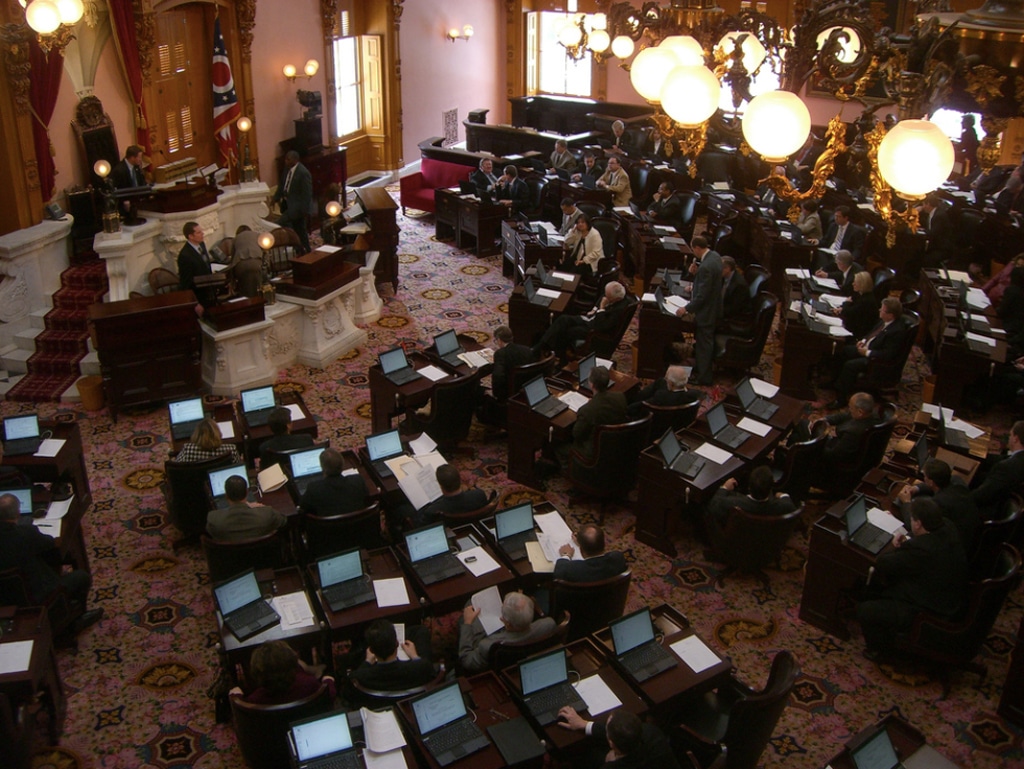In a move that would significantly stifle the state’s burgeoning solar market, a bill has been introduced in the Ohio House of Representatives that would halt the development and buildout of large-scale solar and wind projects for up to three years.
Specifically, HB 786 looks to prevent regulators from certifying any new solar or wind facility greater than 50 MW in capacity, as well as smaller “economically significant” wind farms with a capacity of 5 MW or more.
While not a totally permanent move, the ban would last for three years, or until further legislation from the General Assembly.
Support and dissent
The bill’s primary sponsor, Rep. Todd Smith, defended the proposed legislation by arguing that it is not a total dismantling of the state’s renewable industry that he wants, but rather to “merely to press the pause button,” citing some complaints about “unregulated solar and wind farms” within the state.
Smith’s usage of the term “pressing pause” is interesting in the context of Ohio solar. Similar language was used by lawmakers in 2014, when they froze requirements under Ohio’s renewable energy and energy efficiency standards for two years. Once the standards resumed, they were quickly gutted by the state’s controversial HB 6.
HB 786 is not without its opponents, chief among them being Rep. Casey Weinstein, who referred to the bill as a “bury-our-heads-in-the-sand mentality that is just so, so locked in with the status quo, while the rest of the world and country are moving on.”
Joining Casey is the International Brotherhood of Electrical Workers (IBEW), many members of which work on renewable energy projects, with the group’s Fourth District Representative Steve Crum sharing that the Brotherhood is “Emphatically opposed to this misguided legislation.”
IBEW members even came out in droves at the most recent Ohio Power Siting board meeting, in a show of solidarity with the state’s solar industry:
@IBEW is showing up in force to support solar tonight at an OPSB hearing. Very compelling statements about solar job creation in Ohio.
This is Ohio’s future!
— Dan Sawmiller (@DanSawmiller) December 3, 2020
Ohio’s solar future
While the staunch opposition that it is facing gives hope that HB 786 will fail, the bill’s passing could prove catastrophic for a state that is just starting to find its solar stride. SEIA projects that, in the next five years, Ohio will install 1,627 MW of solar, good for 16th in the nation across that span and far improved over the roughly 300 MW installed to date. Similar to SEIA, Wood Mackenzie ranks Ohio as the top state in the Midwest for solar development over the next five years, driven by 1,075 MWac of solar planned to come on-line by 2021.
The state recently saw the construction of its largest project get underway: the 200 MW Hillcrest Solar facility, developed by Innergex Renewable Energy and located on 1,350 acres of land in Brown County, about 45 miles east of Cincinnati. Innergex is selling the energy generated by the project to an unnamed buyer under a power purchase agreement.
This content is protected by copyright and may not be reused. If you want to cooperate with us and would like to reuse some of our content, please contact: editors@pv-magazine.com.









“Unregulated solar and wind farms”? What the heck is he talking about? Afraid the government isn’t getting a piece of the action, and not getting to run the show? Man, our pioneer spirit has all but been killed by the socialists.